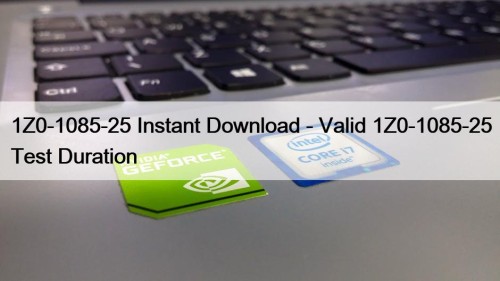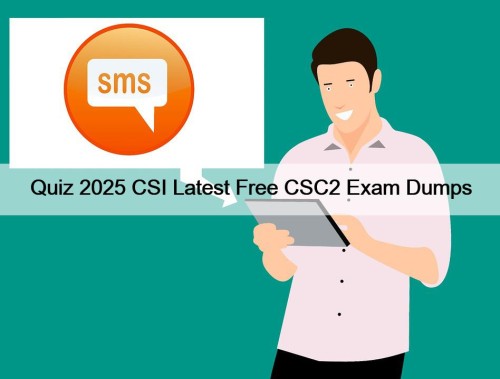Most Popular
 1Z0-1085-25 Instant Download - Valid 1Z0-1085-25 Test Duration
1Z0-1085-25 Instant Download - Valid 1Z0-1085-25 Test Duration
Lead2PassExam makes your investment 100% secure when you purchase 1Z0-1085-25 ...
 Quiz 2025 CSI Latest Free CSC2 Exam Dumps
Quiz 2025 CSI Latest Free CSC2 Exam Dumps
Our product boosts three versions which include PDF version, PC ...
 New AZ-204 Exam Notes, Related AZ-204 Certifications
New AZ-204 Exam Notes, Related AZ-204 Certifications
What's more, part of that Prep4sureExam AZ-204 dumps now are ...



CTFL4 Test Review, CTFL4 Valid Exam Simulator

These questions will familiarize you with the CTFL4 exam format and the content that will be covered in the actual test. You will not get a passing score if you rely on outdated practice questions. Test4Engine has assembled a brief yet concise study material that will aid you in acing the ISTQB Certified Tester Foundation Level CTFL 4.0 (CTFL4) exam on the first attempt. This prep material has been compiled under the expert guidance of 90,000 experienced BCS professionals from around the globe.
BCS CTFL4 Exam Syllabus Topics:
| Topic | Details |
|---|---|
| Topic 1 |
|
| Topic 2 |
|
| Topic 3 |
|
| Topic 4 |
|
BCS CTFL4 Valid Exam Simulator | Reliable CTFL4 Study Guide
If you want to finish it with minimum efforts, Test4Engine BCS CTFL4 test questions and answers is your best choice. Test4Engine BCS CTFL4 test contains high quality exam dumps. Like the actual test, Test4Engine test questions and test answers is of the same standard. Now, the best choice is to choose Test4Engine BCS CTFL4 Certification Training for exam preparation. You must pass at 100%. If you fail, FULL REFUND is allowed.
BCS ISTQB Certified Tester Foundation Level CTFL 4.0 Sample Questions (Q166-Q171):
NEW QUESTION # 166
The four test levels used in ISTQB syllabus are:
1. Component (unit) testing
2. Integration testing
3. System testing
4. Acceptance testing
An organization wants to do away with integration testing but otherwise follow V-model. Which of the following statements is correct?
- A. It is allowed as organizations can decide on men test levels to do depending on the context of the system under test
- B. It is not allowed as organizations can't change the test levels as these are chosen on the basis of the SDLC (software development life cycle) model
- C. It is allowed because integration testing is not an important test level arc! can be dispensed with.
- D. It is not allowed because integration testing is a very important test level and ignoring i: means definite poor product quality
Answer: B
Explanation:
The V-model is a software development life cycle model that defines four test levels that correspond to four development phases: component (unit) testing with component design, integration testing with architectural design, system testing with system requirements, and acceptance testing with user requirements. The V-model emphasizes the importance of verifying and validating each phase of development with a corresponding level of testing, and ensuring that the test objectives, test basis, and test artifacts are aligned and consistent across the test levels. Therefore, an organization that wants to follow the V-model cannot do away with integration testing, as it would break the symmetry and completeness of the V-model, and compromise the quality and reliability of the software or system under test. Integration testing is a test level that aims to test the interactions and interfaces between components or subsystems, and to detect any defects or inconsistencies that may arise from the integration of different parts of the software or system. Integration testing is essential for ensuring the functionality, performance, and compatibility of the software or system as a whole, and for identifying and resolving any integration issues early in the development process. Skipping integration testing would increase the risk of finding serious defects later in the test process, or worse, in the production environment, which would be more costly and difficult to fix, and could damage the reputation and credibility of the organization. Therefore, the correct answer is D.
The other options are incorrect because:
A . It is not allowed as organizations can decide on the test levels to do depending on the context of the system under test. While it is true that the choice and scope of test levels may vary depending on the context of the system under test, such as the size, complexity, criticality, and risk level of the system, the organization cannot simply ignore or skip a test level that is defined and required by the chosen software development life cycle model. The organization must follow the principles and guidelines of the software development life cycle model, and ensure that the test levels are consistent and coherent with the development phases. If the organization wants to have more flexibility and adaptability in choosing the test levels, it should consider using a different software development life cycle model, such as an agile or iterative model, that allows for more dynamic and incremental testing approaches.
B . It is not allowed because integration testing is not an important test level and can be dispensed with. This statement is false and misleading, as integration testing is a very important test level that cannot be dispensed with. Integration testing is vital for testing the interactions and interfaces between components or subsystems, and for ensuring the functionality, performance, and compatibility of the software or system as a whole. Integration testing can reveal defects or inconsistencies that may not be detected by component (unit) testing alone, such as interface errors, data flow errors, integration logic errors, or performance degradation. Integration testing can also help to verify and validate the architectural design and the integration strategy of the software or system, and to ensure that the software or system meets the specified and expected quality attributes, such as reliability, usability, security, and maintainability. Integration testing can also provide feedback and confidence to the developers and stakeholders about the progress and quality of the software or system development. Therefore, integration testing is a crucial and indispensable test level that should not be skipped or omitted.
C . It is not allowed because integration testing is a very important test level and ignoring it means definite poor product quality. This statement is partially true, as integration testing is a very important test level that should not be ignored, and skipping it could result in poor product quality. However, this statement is too strong and absolute, as it implies that integration testing is the only factor that determines the product quality, and that ignoring it would guarantee a poor product quality. This is not necessarily the case, as there may be other factors that affect the product quality, such as the quality of the requirements, design, code, and other test levels, the effectiveness and efficiency of the test techniques and tools, the competence and experience of the developers and testers, the availability and adequacy of the resources and environment, the management and communication of the project, and the expectations and satisfaction of the customers and users. Therefore, while integration testing is a very important test level that should not be skipped, it is not the only test level that matters, and skipping it does not necessarily mean definite poor product quality, but rather a higher risk and likelihood of poor product quality.
Reference = ISTQB Certified Tester Foundation Level Syllabus, Version 4.0, 2018, Section 2.3, pages 16-18; ISTQB Glossary of Testing Terms, Version 4.0, 2018, pages 38-39; ISTQB CTFL 4.0 - Sample Exam - Answers, Version 1.1, 2023, Question 104, page 36.
NEW QUESTION # 167
Which of the following are the phases of the ISTQB fundamental test process?
- A. Test planning and control, Test analysis and design, Test implementation and execution, Evaluating ex t criteria and reporting. Test closure activities
- B. Test planning, Test analysis and design. Test implementation and control. Checking test coverage and reporting, Test closure activities
- C. Test planning and control, Test specification and design. Test implementation and execution, Evaluating test coverage and reporting, Retesting and regression testing, Test closure activities
- D. Test planning. Test specification and design. Test implementation and execution. Evaluating exit criteria and reporting. Retesting and test closure activities
Answer: A
Explanation:
The ISTQB fundamental test process consists of five main phases, as described in the ISTQB Foundation Level Syllabus, Version 4.0, 2018, Section 2.2, page 15:
Test planning and control: This phase involves defining the test objectives, scope, strategy, resources, schedule, risks, and metrics, as well as monitoring and controlling the test activities and results throughout the test process.
Test analysis and design: This phase involves analyzing the test basis (such as requirements, specifications, or user stories) to identify test conditions (such as features, functions, or scenarios) that need to be tested, and designing test cases and test procedures (such as inputs, expected outcomes, and execution steps) to cover the test conditions. This phase also involves evaluating the testability of the test basis and the test items (such as software or system components), and selecting and implementing test techniques (such as equivalence partitioning, boundary value analysis, or state transition testing) to achieve the test objectives and optimize the test coverage and efficiency.
Test implementation and execution: This phase involves preparing the test environment (such as hardware, software, data, or tools) and testware (such as test cases, test procedures, test data, or test scripts) for test execution, and executing the test procedures or scripts according to the test plan and schedule. This phase also involves logging the outcome of test execution, comparing the actual results with the expected results, and reporting any discrepancies as incidents (such as defects, errors, or failures).
Evaluating exit criteria and reporting: This phase involves checking if the planned test activities have been completed and the exit criteria (such as quality, coverage, or risk levels) have been met, and reporting the test results and outcomes to the stakeholders. This phase also involves making recommendations for the release or acceptance decision based on the test results and outcomes, and identifying any residual risks (such as known defects or untested areas) that need to be addressed or mitigated.
Test closure activities: This phase involves finalizing and archiving the testware and test environment for future reuse, and evaluating the test process and the test project against the test objectives and the test plan. This phase also involves identifying any lessons learned and best practices, and communicating the findings and suggestions for improvement to the relevant parties.
Reference = ISTQB Certified Tester Foundation Level Syllabus, Version 4.0, 2018, Section 2.2, page 15; ISTQB Glossary of Testing Terms, Version 4.0, 2018, pages 37-38; ISTQB CTFL 4.0 - Sample Exam - Answers, Version 1.1, 2023, Question 88, page 32.
NEW QUESTION # 168
Which of the following statements about estimation of the test effort is WRONG?
- A. Experience based estimation is one of the estimation techniques.
- B. Effort estimate can be inaccurate because the quality of the product under tests is not known.
- C. Once the test effort is estimated, resources can be identified and a schedule can be drawn up.
- D. Effort estimate depends on the budget of the project.
Answer: D
Explanation:
Effort estimate does not depend on the budget of the project, but rather on the scope, complexity, and quality of the software product and the testing activities1. Budget is a constraint that may affect the feasibility and accuracy of the effort estimate, but it is not a factor that determines the effort estimate. Effort estimate is the amount of work required to complete the testing activities, measured in terms of person-hours, person-days, or person-months2.
The other options are correct because:
A . Once the test effort is estimated, resources can be identified and a schedule can be drawn up, as they are interrelated aspects of the test planning process3. Resources are the people, tools, equipment, and facilities needed to perform the testing activities4. Schedule is the time frame and sequence of the testing activities, aligned with the project milestones and deadlines5.
B . Effort estimate can be inaccurate because the quality of the product under tests is not known, as it affects the number and severity of the defects that may be found and the rework that may be needed to fix them6. Quality is the degree to which the software product satisfies the specified requirements and meets the needs and expectations of the users and clients7.
D . Experience based estimation is one of the estimation techniques, which relies on the judgment and expertise of the testers and other project stakeholders to estimate the test effort based on similar projects or tasks done in the past. Experience based estimation can be useful when there is a lack of historical data, formal methods, or detailed information about the software product and the testing activities.
Reference =
1 ISTQB Certified Tester Foundation Level Syllabus v4.0, 2023, p. 154
2 ISTQB Certified Tester Foundation Level Syllabus v4.0, 2023, p. 155
3 ISTQB Certified Tester Foundation Level Syllabus v4.0, 2023, p. 156
4 ISTQB Certified Tester Foundation Level Syllabus v4.0, 2023, p. 157
5 ISTQB Certified Tester Foundation Level Syllabus v4.0, 2023, p. 158
6 ISTQB Certified Tester Foundation Level Syllabus v4.0, 2023, p. 159
7 ISTQB Certified Tester Foundation Level Syllabus v4.0, 2023, p. 16
[8] ISTQB Certified Tester Foundation Level Syllabus v4.0, 2023, p. 160
[9] ISTQB Certified Tester Foundation Level Syllabus v4.0, 2023, p. 161
NEW QUESTION # 169
Which of the following statements about white-box test techniques is true?
- A. Branch coverage is the most thorough code-related white-box test technique, and therefore applicable standards prescribe achieving full branch coverage at the highest safety levels for safety-critical systems
- B. Code-related white-box test techniques provide an objective measure of coverage and can be used to complement black-box test techniques to increase confidence in the code
- C. Code-related white-box test techniques are not required to measure the actual code coverage achieved by black-box testing, as code coverage can be measured using the coverage criteria associated with black-box test techniques
- D. Achieving full statement coverage and full branch coverage for a software product means that such software product has been fully tested and there are no remaining bugs within the code
Answer: B
Explanation:
This answer is correct because code-related white-box test techniques are test design techniques that use the structure of the code to derive test cases. They provide an objective measure of coverage, such as statement coverage, branch coverage, or path coverage, which indicate how much of the code has been exercised by the test cases. Code-related white-box test techniques can be used to complement black-box test techniques, which are test design techniques that use the functional or non-functional requirements of the system or component to derive test cases. By combining both types of techniques, testers can increase their confidence in the code and find more defects. References: ISTQB Glossary of Testing Terms v4.0, ISTQB Foundation Level Syllabus v4.0, Section 2.3.2.2
NEW QUESTION # 170
Which of the following statements about error guessing is true?
- A. Error guessing is a system that adopts artificial intelligence to predict whether software components are likely to contain defects or not
- B. Experienced testers, when applying error guessing technique, can anticipate where errors, defects and failures have occurred and target their tests at those issues
- C. Error guessing refers to the ability of a system or component to continue normal operation despite the presence of erroneous inputs
- D. Experienced testers, when applying error guessing, rely on the use of a high-level list of what needs to be tested as a guide to find defects
Answer: B
Explanation:
This answer is correct because error guessing is a test design technique where the experience and intuition of the tester are used to anticipate where errors, defects and failures have occurred or are likely to occur, and to design test cases to expose them. Error guessing can be based on factors such as the complexity of the system or component, the known or suspected weaknesses of the system or component, the previous history of defects, or the common types of errors in the domain or technology. Error guessing can be used as a complementary technique to other more systematic or formal techniques, or when there is insufficient information or time to apply them. References: ISTQB Glossary of Testing Terms v4.0, ISTQB Foundation Level Syllabus v4.0, Section 2.3.2.5
NEW QUESTION # 171
......
You can take multiple ISTQB Certified Tester Foundation Level CTFL 4.0 CTFL4 practice exam attempts and identify and overcome your mistakes. Furthermore, through ISTQB Certified Tester Foundation Level CTFL 4.0 CTFL4 practice test software you will improve your time-management skills. You will easily manage your time while attempting the Actual CTFL4 Test.
CTFL4 Valid Exam Simulator: https://www.test4engine.com/CTFL4_exam-latest-braindumps.html
- CTFL4 Latest Test Questions 😻 CTFL4 Braindumps Pdf 🐇 CTFL4 Top Exam Dumps ⛷ Open ▶ www.pass4test.com ◀ enter 《 CTFL4 》 and obtain a free download 🍎CTFL4 Braindumps Pdf
- Best Reliable BCS CTFL4 Test Review - CTFL4 Free Download 😅 Search for ➡ CTFL4 ️⬅️ and download exam materials for free through ▛ www.pdfvce.com ▟ 🍑CTFL4 Real Sheets
- Examcollection CTFL4 Dumps 🎈 CTFL4 Exam Vce Format 🔱 CTFL4 Latest Braindumps Files 😿 Easily obtain free download of ➡ CTFL4 ️⬅️ by searching on ⮆ www.pdfdumps.com ⮄ 🗳CTFL4 Latest Test Questions
- CTFL4 Latest Test Questions 🙌 CTFL4 Latest Test Questions 😄 CTFL4 Certification Book Torrent 😖 Simply search for [ CTFL4 ] for free download on 【 www.pdfvce.com 】 ⚡CTFL4 Exam Tips
- CTFL4 Test Dumps 🧵 Latest CTFL4 Test Pdf 👦 CTFL4 Braindumps Pdf 🐝 Go to website ⇛ www.real4dumps.com ⇚ open and search for { CTFL4 } to download for free 🌞CTFL4 Exam Vce Format
- Reliable CTFL4 Learning guide Materials are the best for you - Pdfvce 🚨 Search for ➤ CTFL4 ⮘ and obtain a free download on ➥ www.pdfvce.com 🡄 🤨CTFL4 Exam Vce Format
- CTFL4 Test Dumps 🕔 New CTFL4 Dumps Free 🛃 CTFL4 Latest Braindumps Files 🌤 Easily obtain free download of ⏩ CTFL4 ⏪ by searching on ➥ www.testkingpdf.com 🡄 🚖CTFL4 Exam Vce Format
- CTFL4 Braindumps Pdf 🔰 CTFL4 Latest Braindumps Files 📴 CTFL4 Reliable Exam Sample 🕷 Search for ⮆ CTFL4 ⮄ on ⏩ www.pdfvce.com ⏪ immediately to obtain a free download 🦧CTFL4 Free Braindumps
- CTFL4 Exam Vce Format 🍡 Latest CTFL4 Test Pdf 🥕 New CTFL4 Dumps Free 🐓 Search for ⮆ CTFL4 ⮄ and easily obtain a free download on ⏩ www.testkingpdf.com ⏪ 🔴Real CTFL4 Exams
- Fantastic BCS - CTFL4 - ISTQB Certified Tester Foundation Level CTFL 4.0 Test Review 💑 Download 【 CTFL4 】 for free by simply searching on ▶ www.pdfvce.com ◀ 🙁Examcollection CTFL4 Dumps
- Pass Your BCS CTFL4 Exam with Confidence 🛐 Search for ⮆ CTFL4 ⮄ and obtain a free download on ▶ www.actual4labs.com ◀ 🗻Exam CTFL4 Cost
- CTFL4 Exam Questions
- 0001.yygame.tw bbs.netcnnet.net 172.233.78.96 yu856.com 5000n-19.duckart.pro 5000n-18.duckart.pro 123.59.83.120:8080 amlsing.com 漢頓天堂.官網.com 霸王龍.官網.com
Tags: CTFL4 Test Review, CTFL4 Valid Exam Simulator, Reliable CTFL4 Study Guide, CTFL4 Valid Test Experience, CTFL4 PDF Guide